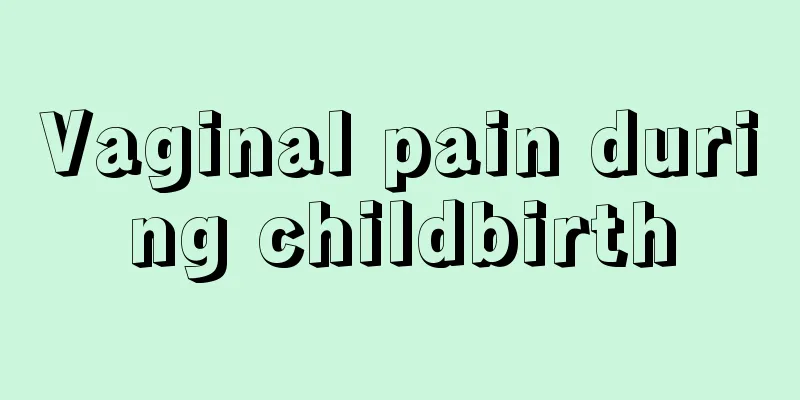In the season when influenza and COVID-19 coexist, how should the two vaccines be administered? What are the precautions?

|
Recently, under the COVID-19 epidemic, many people have become "small yang people". It is winter now, and influenza (flu) is common. The existence of the two "viruses" has once again strengthened people's vigilance in protection. The effective way to prevent and control influenza and COVID-19 is vaccination. So in the season when influenza and COVID-19 coexist, how should the two vaccines be administered? 1. The harm caused by the combination of influenza and COVID-19 has increased dramatically Monitoring data suggest that the intensity of influenza activity increased in 2022, and the detection rates of new coronavirus and influenza virus showed a phenomenon of increasing and decreasing. Whether it is the mechanism research of animal experiments or the clinical epidemiological survey of the population, the results show that the host is more susceptible to the new coronavirus after influenza virus infection. Co-infection can significantly aggravate lung damage and can also induce shock, acute respiratory distress syndrome, fulminant myocarditis, acute kidney injury or multiple organ failure; and increase the incidence and mortality of severe illness. The probability of death in co-infection cases is 2 to 3 times that of patients infected with the new coronavirus alone, and about 6 times that of people who are not infected with either virus. Previously, Chinese experts analyzed the distribution characteristics of influenza epidemics and the etiology of epidemic strains in Shandong Province in 2021-2022. The results showed that the strain type was single this flu season, the influenza virus positive rate and outbreak reports were high, and the overall herd immunity barrier was weak. This shows that it is urgent to strengthen the monitoring and prevention of influenza and new coronary pneumonia in the clinic. II . Coordinated arrangements for vaccination At present, vaccination is the most effective means to prevent seasonal influenza and COVID-19 respectively. After entering the influenza epidemic season, the vaccination time and target population of influenza vaccine and COVID-19 vaccine overlap, and it is necessary to coordinate the vaccination of the two in order to provide direct or indirect immunity and group protection for key populations and high-risk groups. 1. Vaccination time (1) Influenza vaccine Since it takes 2 to 4 weeks for influenza vaccination to produce protective antibodies, the "Technical Guidelines for Influenza Vaccination in China (2022-2023)" clearly recommends that vaccination should be arranged as soon as the vaccine arrives, and vaccination services should be provided throughout the epidemic season. Of course, influenza vaccination can only achieve better immune effects if it is completed before the influenza season. (2) COVID-19 vaccine No month limit. 2. Vaccination plan (1) Influenza vaccine Among the influenza vaccines approved for marketing in the past, only the trivalent inactivated influenza vaccine (0.25 ml dosage) is suitable for infants and young children aged 6 to 35 months, and this year the quadrivalent inactivated influenza vaccine (0.25 ml dosage) has been added. In addition, the "Technical Guidelines for Influenza Vaccine Immunization in China (2022-2023)" states that for inactivated influenza virus vaccines, children aged 6 months to 8 years should receive two doses for the first time, and one dose each year thereafter. Even those with a history of vaccination only need to receive one dose; for live attenuated influenza vaccines, regardless of vaccination history, one dose is sufficient each year. (2) COVID-19 vaccine There are several options for COVID-19 vaccination: ① 3 doses of inactivated vaccine + 1 dose of CanSino intramuscular recombinant new coronavirus vaccine (adenovirus type 5 vector); ②3 doses of inactivated vaccine + 1 dose of Zhifei Longcoma recombinant new coronavirus vaccine (CHO cells); ③3 doses of inactivated vaccine + 1 dose of CanSino recombinant novel coronavirus vaccine for inhalation (adenovirus type 5 vector); ④3 doses of inactivated vaccine + 1 dose of Zhuhai Livzon recombinant novel coronavirus fusion protein (CHO cell) vaccine; ⑤2 doses of CanSino intramuscular adenovirus vector vaccine + 1 dose of CanSino inhaled recombinant new coronavirus vaccine (adenovirus type 5 vector); ⑥3 doses of inactivated vaccine + 1 dose of Chengdu Wesk recombinant new coronavirus vaccine (sf9 cells); ⑦3 doses of inactivated vaccine + 1 dose of Beijing Wantai nasal spray influenza virus vectored new coronavirus vaccine; ⑧3 doses of inactivated vaccine + 1 dose of Zhejiang Clover recombinant SARS-CoV-2 protein subunit vaccine (CHO cells); ⑨3 doses of inactivated vaccine + 1 dose of Sinocell recombinant coronavirus 2valent S trimer protein vaccine. It should be noted that the interval between the second dose of booster immunization and the first dose of booster immunization should be more than 6 months. (3) Notes The flu vaccine and the COVID-19 vaccine target different viruses. The flu vaccine is mainly for influenza viruses, while the COVID-19 vaccine is mainly for novel coronaviruses. Therefore, even if you have received the COVID-19 vaccine, you should still get the flu vaccine. It should be noted that as the COVID-19 vaccine booster vaccination and some basic immunizations continue to advance, the timing of the flu vaccine may overlap. The "Technical Guidelines for Influenza Vaccine Immunization in China (2021-2022)" states that the interval between influenza vaccination and COVID-19 vaccination should be greater than 14 days, and it is recommended that the two vaccines be injected separately in different limbs to minimize the risk (many countries are currently implementing plans for simultaneous vaccination of influenza and COVID-19 vaccines, but research evidence for simultaneous vaccination is still relatively limited). 3. Target audience (1) COVID-19 vaccine In principle, everyone aged ≥ 3 years can be vaccinated, especially children aged 3 to 11 years, the elderly and people with underlying diseases should actively receive the new coronavirus vaccine. (2) Influenza vaccine In principle, anyone aged 6 months or older can get the flu vaccine, especially those who meet the following conditions. Vaccination is strongly recommended: (1) People with weakened immune function, such as children aged 6 months to 5 years and elderly people aged 60 years or older; (2) People who work or study in special places, such as medical staff and those who work or live in nursing homes; (3) People with chronic diseases and frail people who can get the flu vaccine when their condition is stable; people who travel frequently, etc. (Note: People who are allergic to eggs can get the flu vaccine. Both the 2015 and 2020 editions of the Pharmacopoeia of the People's Republic of China state that this is indicated.) (3) Notes There is overlap in the recommended vaccination priorities and high-risk groups for the new coronavirus vaccine and influenza vaccine. A meta-analysis of 54 studies showed that the proportion of co-infection of the two viruses among high-risk groups such as children, the elderly, and critically ill patients is relatively high. Therefore, the corresponding vaccination strategy should take into account the vaccination service capabilities of different regions. It can be implemented starting with people with special needs and gradually expanded to the general population to avoid a run on vaccination service resources. 3. Summary At present, clinical understanding of the new coronavirus and influenza virus is still limited, and the future development situation remains uncertain. While monitoring the new coronavirus and influenza virus in the population, prevention and control still need to consider the multiple influences of the host, pathogens, natural and social environment, and strive to achieve the greatest possible balance between epidemic prevention and control and social and economic development. References [1] Zhang Ting, Bai Xuefei, Wang Wen, et al. Current thoughts on the simultaneous vaccination of seasonal influenza vaccine and novel coronavirus pneumonia vaccine in China [J]. Chinese Journal of Preventive Medicine, 2022, 56(2): 103-107. [2] National Immunization Program Technical Working Group, Influenza Vaccine Working Group. Technical Guidelines for Influenza Vaccination in China (2022-2023) [J]. Chinese Journal of Preventive Medicine, 2022, 56(10): 31. [3] Swets MC, Russell CD, Harrison EM, et al. SARS-COV-2 Co-infection with influenza viruses, respiratory syncytial Virus, or adenoviruses[J]. Lancet, 2022, 399 (10334): 1463-1464. [4] Jiang Mingyue, Yang Weizhong, Feng Luzhao. Study on the interaction between novel coronavirus pneumonia and influenza[J]. Chinese Journal of Preventive Medicine, 2022, 56(11): 1540-1542. [5] Ashraf M, Rajaram S, English PM. How the COVID 19 pandemic will shape influenza public health initiatives: the UK experience[J]. Hum Vaccin Immunother, 2022, 18(5): 2056399. [6] Kim EH, Nguyen TQ, Casel M, et al. Coinfection with SARS-COV-2 and influenza A virus increases disease severity and impairs neutralizing antibody and CD4(+) T cell responses[J]. J Virol, 2022, 96(6):e0187321. [7] Song Shaoxia, Sun Lin, He Yujie, et al. Analysis of influenza epidemic characteristics and genetic characteristics in Shandong Province in 2021-2022[J]. Chinese Journal of Preventive Medicine, 2022, 56(11): 1554-1559. Text and layout丨Fu Yujie Editing and proofreading: Feng Xiwen Review丨Xing Chen |
<<: Stock up! Be careful with COVID-19 medications...
>>: Feeling anxious and short of breath after having “Yang” should alert you to viral myocarditis!
Recommend
Children are nearsighted, don't have these misunderstandings
In fact, many people have some misunderstandings ...
The telomere code at the end of life: where is the limit of life span?
Produced by: Science Popularization China Author:...
Ding Dong! You have a recipe for patients with upper gastrointestinal bleeding. Please check it.
Author: Yang Li, The Fifth Medical Center, PLA Ge...
How to make putty dry quickly in winter? What should you pay attention to when scraping putty?
There are many additives in putty, which need to ...
Vaginal bleeding, what's going on?
Vaginal bleeding is quite common in life, especia...
Cao Cao, “a capable minister in peaceful times and a hero in troubled times,” died of what disease?
The Yangtze River flows eastward, and the waves w...
What is a pelvic fluid mass?
The pelvic area is relatively large, including th...
Why do some people smoke a pack of cigarettes a day and live to be 90 without getting lung cancer?
November 17 is International Lung Cancer Day. Smo...
What foods will definitely cause miscarriage?
We all know that if a woman's fertilized egg ...
What causes adnexitis?
Adnexitis is not unfamiliar. Adnexitis is a very ...
What is the best medicine for irregular menstruation?
Menstruation comes once a month, and regular mens...
How to check the length of the cervix
Many female friends who are pregnant for the firs...
What is the cause of back pain after spontaneous abortion?
After a miscarriage, the patient will inevitably ...









